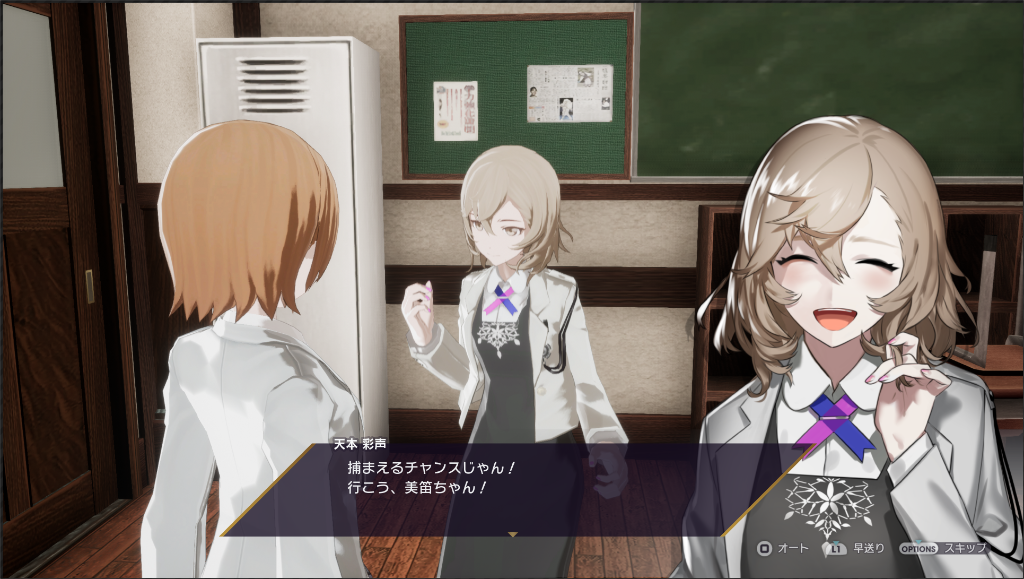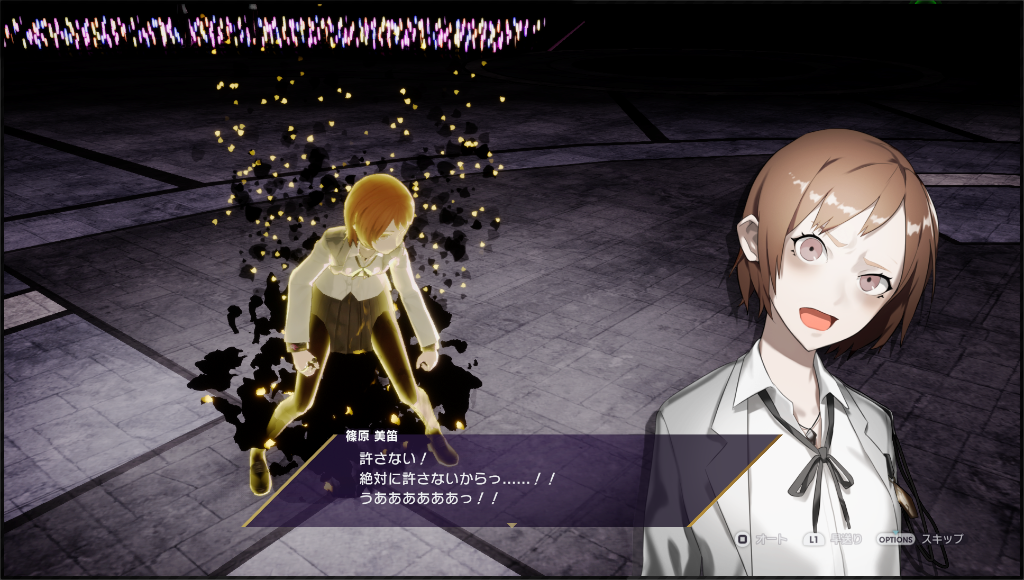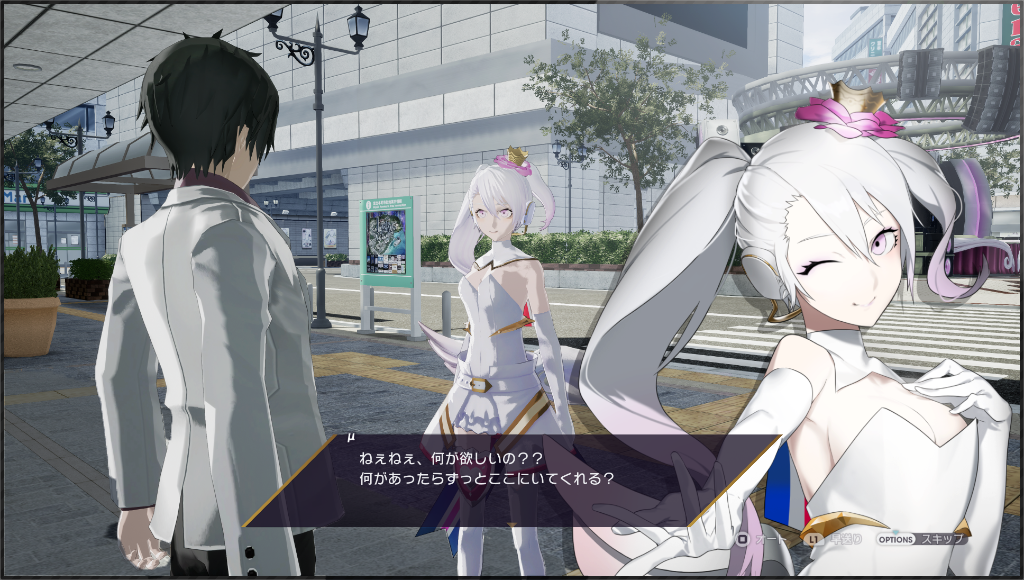When I reviewed The Caligula Effect for the PS Vita in 2017, I described it as “a dark JRPG with a unique battle system and a story that keeps you intrigued despite some missteps.” Fortunately, it looks like its remake intends to capitalize on its strengths.
The Caligula Effect: Overdose is a remake of The Caligula Effect. It came out in Japan this past May for the PlayStation 4 and will be out worldwide in early 2019 for the PlayStation 4, Nintendo Switch, and PC. Like the original, it follows a group of students trying to escape a simulated world, but it adds many new features.
Forbidden Musician Route
By far the biggest addition in The Caligula Effect: Overdose, the Forbidden Musician Route is an entirely new story route. In the original game, the protagonist as a member of the Go-Home Club, the group of students fighting to escape the virtual world.
In Overdose, however, you can choose whether to remain loyal to the Go-Home Club or to join the Ostinato Musicians and work against the club as a double agent. This also introduces multiple endings and lets you learn more about the Musicians. However, due to having you work as a double agent, it’s unclear if the Musician Route is an entirely separate story or if it merely adds a few new events.
Female Protagonist Option
In the original Caligula Effect, the protagonist was male, but Overdose allows you to choose whether to play as a male or female main character. Other characters will interact with you differently depending on which you choose. This shouldn’t affect the story too much, but it will be interesting to see if certain events play out differently.
Refined Combat and Character Interactions
The Caligula Effect featured an unusual combat system where you set up your attacks ahead of time, using the Imaginary Chain system to see a prediction of what would happen, and then the attacks would play out in real time. It was a cool blend of turn-based and action combat, but it became tedious and caused major frame rate dips. Overdose has refined the combat system and improved the frame rate issues.
My biggest criticism of the original, however, was its social system. The Caligula Effect boasted 500 recruitable party members in addition to the main cast, but they were bland characters with generic dialogue that you would see repeated over and over. Overdose claims to have improved the individuality of these optional companions. However, 500 characters is a lot to make feel unique, so I’m still skeptical. Fortunately, this aspect could more or less be ignored in the original.
On the other hand, The Caligula Effect did a great job with the individual Character Episodes for its main case. Since the addition of the Forbidden Musician Route means the antagonists should have their own Character Episodes now, hopefully they are just as interesting.
Conclusion
The Caligula Effect: Overdose aims to improve the combat, frame rate, and social system that hindered the original game, while adding new characters and story content. Here’s hoping it lives up to its potential and becomes the game the original could have been.














































































































